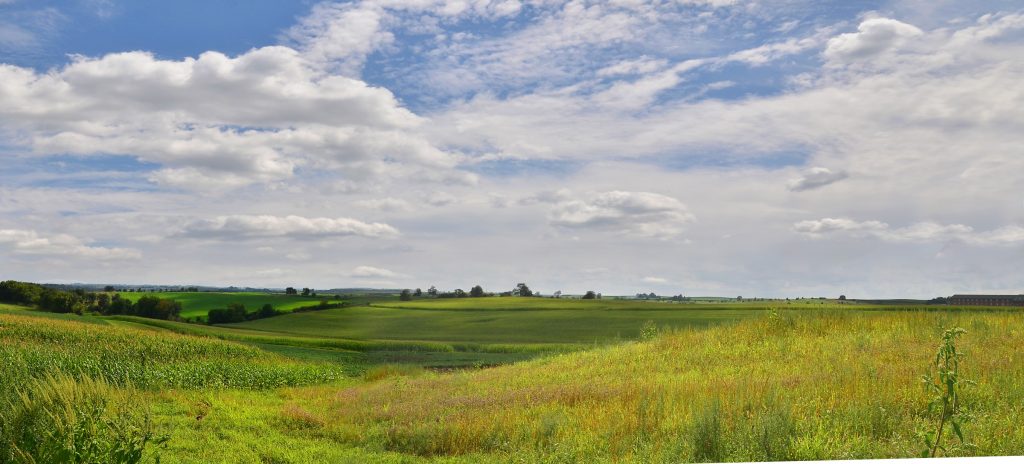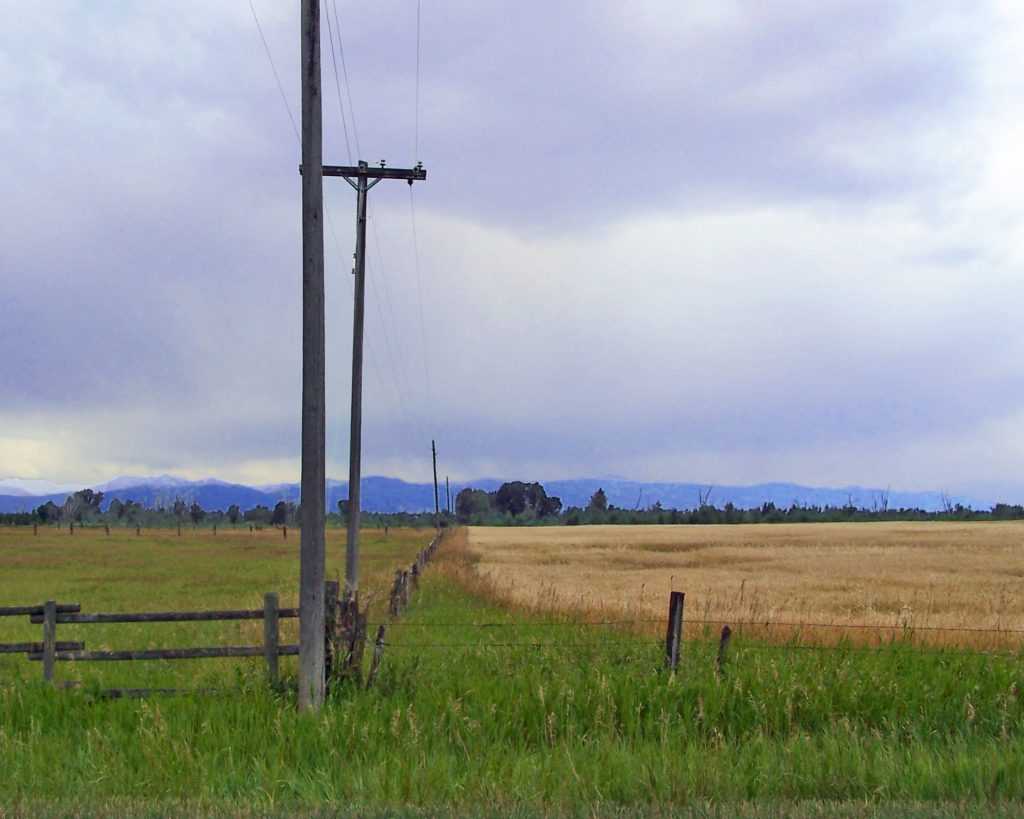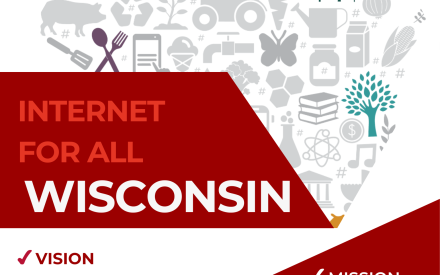The reasons why broadband service has not reached all regions of the state and country are varied and complicated. Population density or rurality, infrastructure expense, data limitations, and legal structures all play a part, depending on the location. Below are some explanations of why access remains low in some areas and among some populations.

Population Density
For internet service providers (ISPs), investments in broadband infrastructure are weighed against the customers and revenue they can gain. The argument is that the return on investment (ROI) in low population areas is insufficient to warrant large investments. The lower the population density, the greater the cost of the last mile investment comes into play. This has been a major rationale behind numerous federal and state broadband initiatives, to help offset these low ROIs.
Photo Credit: “Rural Wisconsin landscape 08-22-2013 161” by Richard Hurd is licensed under CC BY 2.0. To view a copy of this license, visit https://creativecommons.org/licenses/by/2.0/?
Terrain
Consider Richland County, WI which has a population density of about 31 people per square mile but relatively low broadband access of only 52.1 percent. One reason for the difference in access may be the terrain. Richland County is in the heart of the Driftless region, which has a very uneven landscape with low rolling hills. In this type of geography, the cost of building the last mile can be particularly high because it can require additional or more expensive construction and expertise. For providers, the additional cost may sufficiently lower the return on infrastructure investment to deter expanding service.
Photo Credit: “img_4383-defogged” by Mulad is licensed under CC BY 2.0. To view a copy of this license, visit https://creativecommons.org/licenses/by/2.0/?ref=openverse.


Other Factors Affecting Expenses
Expanding access can also be expensive because ISPs are often augmenting existing infrastructure. Specifically, they are using existing telephone poles to carry the necessary broadband infrastructure (such as fiber) to new consumers. Unless the ISP already owns the poles (as utility co-ops in Wisconsin sometimes do), they have to pay pole attachment fees. At roughly 18 poles per mile, these rental fees accumulate quickly. See “An Example of Costs” for more information.
An additional consideration in Wisconsin is the shortened construction window. Most years, there are only about 5-6 months out of the year with ideal weather for construction projects, which can increase costs as projects get delayed or must be planned over longer periods of time.
Photo Credit: Telephone lines: “field and telephone poles bozeman montana” by Trace Nietert is licensed under CC BY 2.0. To view a copy of this license, visit https://creativecommons.org/licenses/by/2.0/?ref=openverse.
Take Rate
The percentage of potential subscribers offered the service that actually subscribe is also a factor. This percentage of subscribers is known as the take rate. The take rate affects the ROI—the higher the take rate, the higher the ROI. To break even, ISPs generally seek a 30-50 percent take rate. Communities demonstrating that they will have a high take rate may be more likely to receive high-speed, fixed internet service. Communities with a notable share of households that are less likely to use the internet, such as those with a large Amish population, may need to consider other strategies to address take rates.
Photo Credit: “Devil’s Lake near Baraboo Wisconsin. Here we see the beginning of the Sauk Mega Sequence and the Great Unconformity. #DevilsLake #wisconsin #sauk #megasequence #greatunconformity #arizonaguide” by Nate Loper • #ArizonaGuide ️ is licensed under CC BY 2.0.

AN EXAMPLE OF COSTS
While cost estimates vary, this example demonstrates how the cost per subscriber of rural provision can be an order of magnitude greater than in urban areas. A 2014 report from a technology consulting
company estimated costs of broadband infrastructure using fiber technology in a range of settings with varying terrain and population density. They estimate, for example, $85,000 per mile for new
underground construction (CTC Technology and Energy, 2014). If new infrastructure is needed for overhead or aerial strands, they estimate $51,000 per mile. If current telephone wires are already in place, they estimate $12,000 per mile in a rural area and $15,000 per mile in an urban area.
Internet service providers are concerned with the potential return on investment (ROI) when they make fiber installation expenses and thus weigh the potential revenue from new consumers, including take rate, against the expense of the infrastructure. The costs of new investment in urban areas can be
spread over more customers. For example, spending $12,000 per mile in Richland County at 31 people per square mile is roughly $387/person. In Outagamie County, at 277 people per square mile, the cost per person, even using the more expensive urban area cost, is roughly $54/person.
“…access to broadband is not sufficient for homes to utilize the service—it must also be affordable.”
Affordability and the Take Rate
The price of internet access for consumers can be a barrier, particularly for lower income households, and, in some communities, may help us understand a low take rate. There is potential for fiber nearly everywhere, but it is not always at a price that would make it affordable to residents without subsidies or government investment.
Even where the more affordable physical infrastructure is already in place, the costs of hookups, data plans, and broadband subscriptions can be a barrier to access. While prices vary by service provider and the characteristics of individual packages, one might expect to pay $40 per month or more for broadband services, which may be cost prohibitive for low-income households. This is an important observation because it means that access to broadband is not sufficient for homes to utilize the service—it must also be affordable. The cost of the service, regardless of location, is likely a barrier for many households. This affordability concern is particularly significant when one considers that the primary way to move out of poverty is to invest in education. Increasingly, investing in education, retraining, and professional development requires access to broadband internet. The poverty trap appears to deepening.










 2024 Wisconsin Rural Economic Summit
2024 Wisconsin Rural Economic Summit


